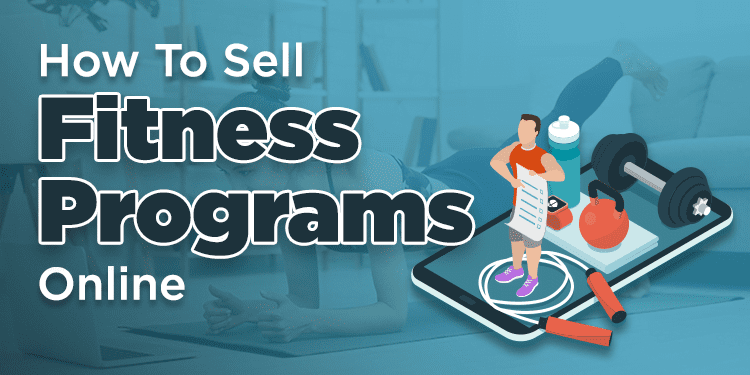How to Create a Workout Program to Sell Online
Introduction
How do I create a workout program to sell online? In the fitness business, selling a training programme online has become a popular and profitable venture. With the ease and accessibility of the internet, an increasing number of people are looking for personalised fitness routines that they can follow from the comfort of their own homes. If you have fitness experience and expertise, producing and marketing your own workout programme might be a terrific way to share your knowledge and earn money. This post will walk you through the steps of developing an exercise programme to sell online. For gym website design read on.
1. Identify Your Target Audience
It is critical to define your target audience before developing a fitness programme. Are you looking for new customers, athletes, busy professionals, or a certain demographic? Understanding your target audience will allow you to personalise your programme to their individual requirements and objectives. Conduct market research, evaluate competitor offerings, and collect insights to develop a programme that stands out and caters to a certain niche.
2. Define the Program Structure
2.1 Set Goals and Objectives
Determine the key goals of your exercise programme. Are you aiming for weight loss, muscle gain, strength training, flexibility, or a mix of these goals? Define the objectives that your programme will assist your clients in achieving. This will enable you to design specialised and targeted workouts to accomplish those objectives.
2.2 Determine the Duration
Determine the length of your programme. Will it be a four-week, eight-week, or twelve-week programme? Consider the workout’s intricacy and the time required to get the desired outcomes. Shorter programmes may appeal to people wanting immediate results, whilst longer programmes may appeal to those seeking a total transformation.

2.3 Design the Program Structure
Break your programme down into phases or weeks. Each phase might concentrate on a different component of fitness or increase in intensity. To keep your customers engaged and motivated, provide a logical path. Consider adding rest and recuperation days to avoid burnout and maximise outcomes.
3. Create Engaging and Effective Workouts
3.1 Exercise Selection
Choose activities that correspond to the goals of your programme and the fitness level of your target audience. Include a range of workouts to target various muscle groups and keep things interesting. To accommodate different scenarios, consider incorporating both bodyweight and equipment-based exercises.
3.2 Provide Clear Instructions
Make sure your routines include clear and simple directions. Include advice for good form and technique for each exercise to avoid injuries and maximise efficacy. Consider giving video demos or graphics to help your consumers understand how to perform each exercise correctly.
3.3 Include Progression and Modifications
Create workouts that are scalable and progressive. As clients progress through your programme, include options for increasing the intensity or difficulty of exercises. Similarly, make changes for those with varying fitness levels or constraints, so your programme is inclusive and accessible to a wider audience.
4. Offer Additional Resources
4.1 Nutrition Guidance
Consider including nutrition counselling or meal planning as part of your programme. Nutrition is critical to reaching exercise goals, and offering nutritional recommendations can increase the total value of your programme. Collaborate with nutritionists or dietitians to create meal plans that are in line with the goals of your programme.

4.2 Support and Accountability
Give your consumers ongoing support via a private online community, email, or chat. This will assist them in remaining motivated, asking questions, and sharing their progress. Consider providing regular check-ins or accountability measures to help your consumers stay on track and dedicated to their fitness quest.
4.3 Progress Tracking
Include tools or procedures for tracking progress in your programme. Workout journals, measuring charts, and digital tracking applications are all examples of this. By assisting your customers in tracking their development, you enable them to recognise their progress and remain encouraged throughout the programme.
5. Create a Professional Platform
5.1 Choose a Delivery Method
Choose the platform where you will deliver your fitness programme. A specialised website, a mobile app, or a membership platform could be used. To ensure a smooth experience for your customers, consider the platform’s simplicity of use, accessibility, and scalability.
5.2 Develop Engaging Content
To advertise your training programme, provide appealing and helpful content. Written descriptions, photographs, videos, testimonials, and success stories are all acceptable. Engage your potential clients by emphasising your program’s unique features and benefits, as well as the value they will receive.
5.3 Set a Competitive Price
Decide on a pricing approach for your exercise programme. Investigate the market to learn about the pricing ranges for similar programmes. Consider the value you provide, the length of your programme, and the degree of support offered. Price your programme competitively to attract customers while still maintaining profitability for your company.

6. Market and Promote Your Program
6.1 Build an Online Presence
Create an online presence by using social media, a professional website, and relevant fitness forums. Share useful material, fitness suggestions, and success stories to increase reputation and attract new clients. Engage your audience and answer to enquiries as soon as possible to build trust and connection.
6.2 Leverage Influencers and Partnerships
Expand your reach by collaborating with fitness influencers or partnering with related brands. Influencers can help market your programme to their audience, and partnerships can give opportunities for cross-promotion. Seek out persons or brands who have similar values as your target audience.
6.3 Offer Limited-Time Promotions
Offer limited-time deals or discounts to create a sense of urgency and enthusiasm. This may persuade prospective customers to act and make a purchase. To encourage sales and reward customer loyalty, consider offering early-bird discounts, package offers, or referral programmes.
7. Provide Excellent Customer Support
7.1 Respond Promptly to Inquiries
Respond quickly to client enquiries and provide timely assistance. Answer questions, resolve concerns, and provide assistance as they progress through their fitness journey. This quality of service will not only improve their experience, but will also add to great word-of-mouth promotion.
7.2 Gather and Utilize Customer Feedback
Collect feedback from your consumers on a regular basis to better understand their experiences and find areas for improvement. Use this input to improve and modify your programme, ensuring that it meets the needs and expectations of your target audience.
7.3 Offer Refunds or Guarantees
Consider establishing a refund policy or a satisfaction guarantee to reassure potential customers. This indicates your conviction in the efficacy of your programme and alleviates any reservations about making a purchase.
Conclusion
Developing and selling an online workout programme needs careful planning, attention to detail, and a thorough grasp of your target demographic. You may create a complete and entertaining training programme that fulfils the demands of your consumers by following the steps indicated in this article. To stay ahead in the competitive online fitness market, remember to constantly tweak and develop your programme based on client feedback and market trends. We build websites for you.






